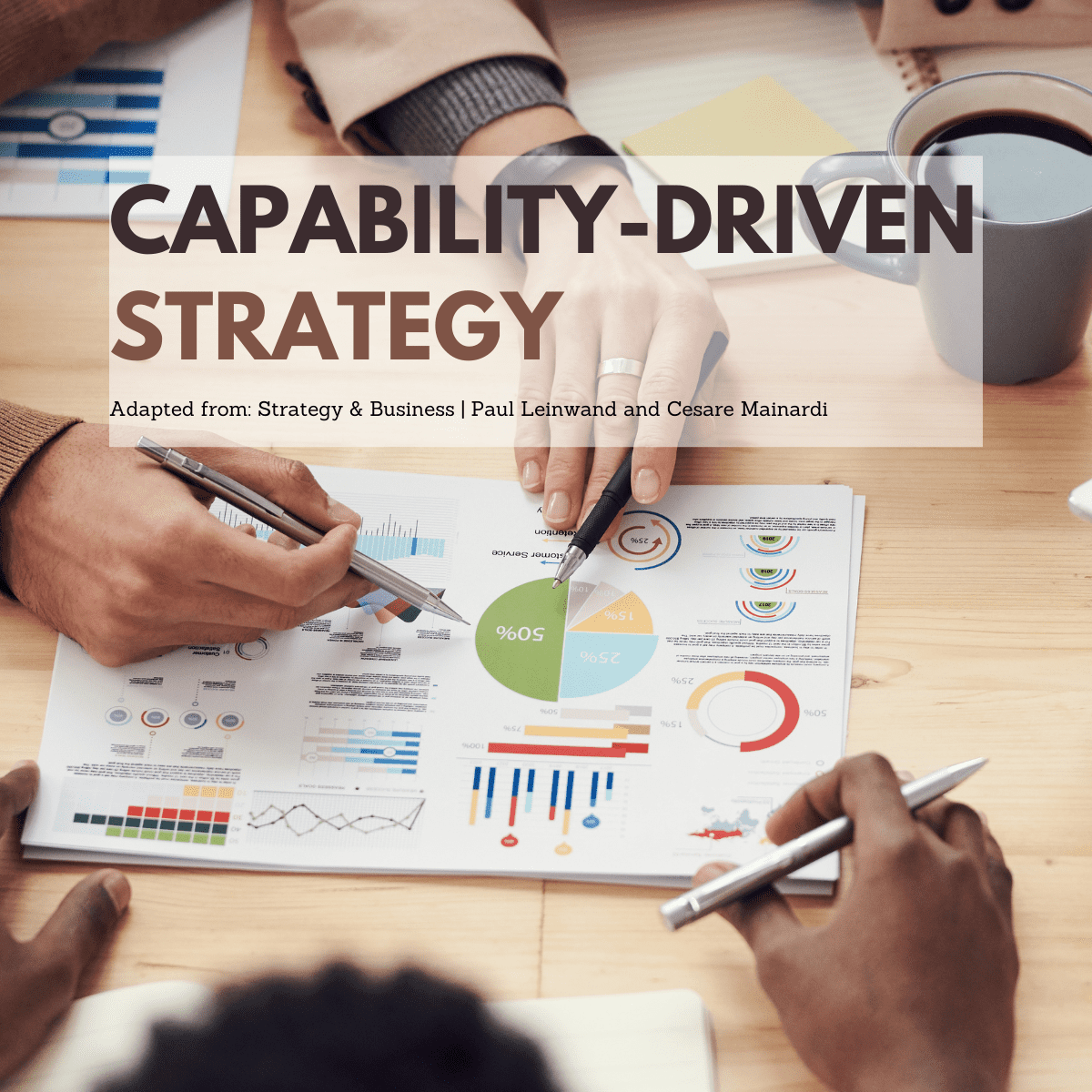Adapted from: Strategy & Business | Paul Leinwand and Cesare Mainardi
“In a survey of 500 senior Executives around the world, about 80 percent said that their overall strategy was not well understood, even within their own company.”
This problem arose from the way these companies are managed. There are significant gaps between strategy and execution. This can be done with regular, focused monitoring coupled with immediate corrective action on anything that is preventing achievement.
There are a few companies though, which combined strategy and execution contrary to the conventional but have built the kind of differentiating capabilities that gave them a major strategic advantage.
Here are five unconventional practices for building and using distinctive capabilities your organisation should master:

- Stick to your identity. You may offer a wide variety of products and services in multiple sectors, but always be clear with your identity. Align three basic elements: a value proposition; a system of distinctive capabilities that shall enable delivery on this value proposition; and a chosen portfolio of products and services that all make use of those capabilities.
Staying true to your identity doesn’t mean becoming complacent or losing your ability to change. It means using your strengths as a guide as you move through a rapidly changing world. When the entire company focuses on a specific way of creating value, employees are not easily distracted. They can concentrate on differentiating the enterprise in ways that naturally outpace their competitors’ efforts.
- Focus and devote on chosen capabilities. Focus on a few capabilities that are worth your full attention, and devote time to making them excellent. To develop these capabilities, blueprint them and continuously build them out with small management changes and regular breakthrough innovations using your own technologies and practices.
Individual skills and talents become more significant when the company weaves them together to produce something unique to that enterprise.
- Work that Culture.Culture can either reinforce or undermine a company strategy.
The details of some successful companies’ culture may be unique, but it reinforces their distinctive strengths. Their people are committed to the work; they feel mutually accountable for results and develop a kind of collective mastery that is hard to duplicate.
One can sense the high level of trust and enthusiasm in these cultures in the very specific pride people have about their companies.
- Cut costs.Managing your costs is a way to make critical choices about identity and direction. It moves your company to a high level of financial discipline, redirecting resources to the core capabilities that are strategically important. Even when times are tough, don’t cut costs across the board. Find ways to double down on strategic priorities and cut the rest.
- Design your future.Seek out higher aspirations — apply your capabilities to a broader range of challenges while serving the fundamental needs and wants of your customers. You cannot be threatened by disruption, because your capabilities give opportunities for expansion.
One will tend to work hard to avoid complacency, explicitly anticipating how one’s capabilities will need to evolve.
How the Five Acts Work Together
These acts are so interconnected that you have to adopt them all together.
- Failing to commit to an identity, could cause you to become scattered and continually shift your focus and not be able to build the capabilities you need.
- Failing to focus and devote on chosen capabilities could cause you to rely on your existing functions to achieve your strategic goals. You could become a company that perennially promises great things but never seems able to deliver.
- Failing to put culture to work could make your people feel trapped and disengaged. Tendency is for new strategies to fail because people pay lip service to them without believing they will last.
- Failing to cut costs cause starvation on the parts of your company that matter the most and overindulge those not needed. Critical capabilities lose support, and they blend and blur into the rest of the enterprise.
- Failing to design your culture run the risk of falling behind competitors that are shaping theirs. You might lose the opportunity to become influential and thereafter be dependent on more coherent and thus more dominant players in your industry.
The five unconventional acts are not the only path to success. But it provides this kind of long-term, sustainable success. There is a great deal of precedent and some of the most renowned, creative, and influential enterprises in the world keep moving forward along this path.
Now is a great time to review and renew your plans for the new year. Get in touch.


